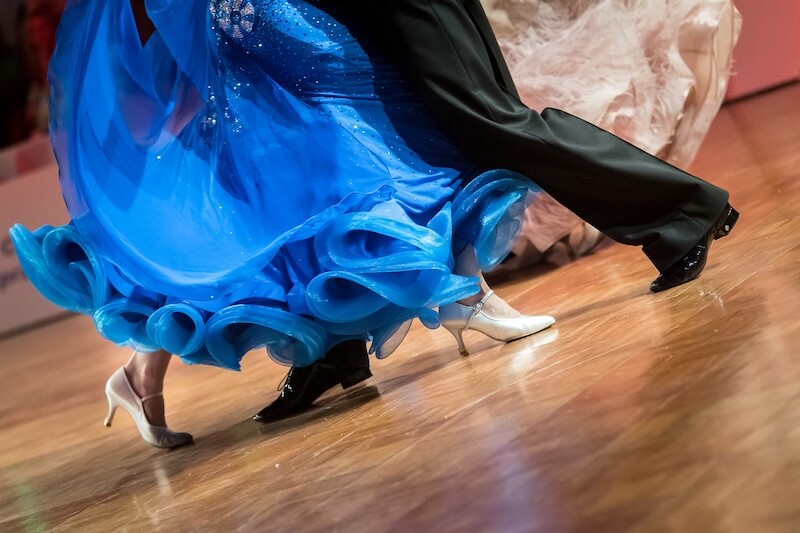Vienna, the enchanting capital of Austria, is renowned for its rich cultural heritage, classical music, and elegant traditions. Among its most celebrated cultural phenomena are the Viennese balls, opulent evening affairs that have captivated the hearts and imaginations of generations. The traditions and history of these balls inspire thoughts of grandeur. Imagine yourself attending a fancy ball in Vienna, especially if you have Austrian ancestors.
The Origins of Viennese Balls
Viennese balls can be traced back to the 18th century, during the height of the Habsburg Empire in Vienna, Austria. These grand social events initially emerged as exclusive gatherings held in the palaces and noble residences of the aristocracy.

The earliest Viennese balls were elaborate affairs attended by members of the upper class, including aristocrats, nobles, and royalty. These events served multiple purposes: they provided opportunities for socializing, networking, and displaying one’s status and refinement. Additionally, they offered a platform for showcasing the cultural achievements of the time, including music, dance, and fashion.
One defining characteristic of Viennese balls is the prominence of dances, particularly the waltz. Originating in the Austrian countryside, the waltz gained popularity in Vienna during the late 18th century and became an integral part of ballroom culture. Its graceful movements and flowing melodies captivated attendees, making it the quintessential dance of the era.
As Viennese balls grew in popularity, they expanded beyond the aristocracy to include members of the middle class and aspiring socialites. This widening interest in the balls allowed a broader segment of society to participate in the festivities and contributed to their enduring appeal.
Perhaps your Austrian ancestors might have been in attendance at one of these balls, or perhaps they admired the attendees from a distance.
The Golden Age of Viennese Balls
The 19th century is commonly regarded as the Golden Age of Viennese balls. This period was marked by unprecedented opulence, elegance, and cultural flourishing in Vienna, Austria. These grand Viennese balls became synonymous with sophistication, romance, and refinement.
Vienna was the capital of the vast Austro-Hungarian Empire during the 19th century, and its aristocratic society led a lavish and extravagant lifestyle. Viennese balls attracted nobility, royalty, and prominent figures from across Europe.

The Vienna Opera Ball at the Vienna State Opera and the Imperial Ball at the Hofburg Palace were among the most prestigious and extravagant balls of the era. These events were characterized by elaborate decorations, sumptuous attire, and meticulous attention to detail, creating an atmosphere of unparalleled splendor and sophistication.
This golden age was not only a time of social extravagance but also a period of cultural vibrancy and artistic innovation. These events provided a platform for showcasing the talents of musicians, dancers, and fashion designers, contributing to Vienna’s reputation as the cultural capital of Europe.
Viennese Ball Attire
Even today, attending a Viennese ball demands attire of utmost elegance and sophistication.
Women typically opt for floor-length evening gowns crafted from luxurious fabrics such as silk or satin, adorned with intricate embellishments such as sequins or lace. Long gloves, statement jewelry, and elegant heels complete their ensemble, exuding grace and glamour.
Men often don a tailored tuxedo or evening suit in black or dark hues, paired with a crisp dress shirt and bow tie. Attention to detail is key, with cuff links, pocket squares, and polished dress shoes adding refinement to their look.

Comfortable footwear for both men and women is recommended, as hours of dancing and socializing await in the ballroom. Adherence to the event’s dress code and theme is crucial, ensuring a harmonious and elegant ambiance. Ultimately, attendees aim to embody the timeless elegance and romance of Viennese culture, making each ball an unforgettable celebration of sophistication and style.
Should you ever get the opportunity to attend a ball in Vienna, be sure to check the dress code very carefully.
The Viennese Waltz
One of the hallmarks of the Golden Age of Viennese balls was the emergence of the waltz as a dominant dance form. The Viennese waltz, with its graceful movements and enchanting melodies, captivated attendees and became an integral part of ballroom culture. Legendary composers such as Johann Strauss II composed music specifically for these events, further enhancing their allure and contributing to the romantic atmosphere.

Characterized by its flowing movements and sweeping turns, the Viennese waltz continues to captivate dancers and spectators alike with its romantic allure. The dance is traditionally performed in 3/4 time, with couples moving gracefully across the ballroom floor in a series of fluid motions.
The Viennese waltz requires impeccable timing, coordination, and posture as dancers navigate intricate patterns and spins with precision. Its tempo is brisk and lively, evoking a sense of joy and exhilaration in those who participate.
The Viennese waltz remains a cherished tradition in ballrooms around the world, enchanting audiences with its timeless beauty and sophistication. As couples glide across the dance floor, they embody the spirit of romance and refinement that defines Viennese culture. With each graceful turn and dip, the Viennese waltz continues to inspire awe and admiration, leaving an indelible mark on the hearts of all who experience its magic.
Viennese Ball Traditions
Viennese ball traditions are steeped in history, elegance, and cultural significance. These traditions reflect the grandeur of Austria's capital and its rich heritage. If you are planning a trip to Austria during the ball season—which reaches its peak in January and February—be sure to buy a ticket well in advance of the event.

Opening Ceremony
Viennese balls typically commence with an elaborate opening ceremony featuring a grand entrance by dignitaries, debutantes, and honored guests. This procession sets the tone for the evening's festivities and adds a sense of pomp and ceremony to the event.
Damenspende
The term damenspende—meaning ladies’ gift—refers to a longstanding tradition in Viennese balls, in which ladies receive a small gift or token as a gesture of appreciation and acknowledgment for their attendance.
Debutante Presentation
One of the highlights of Viennese balls is the debutante presentation, in which young men and women make their formal debut into society. Dressed in elegant attire, debutantes are introduced to the attendees and may participate in traditional dances, such as the opening waltz.
Damenwahl
The term damenwahl translates as “ladies’ choice” in English and refers to a traditional custom observed at Viennese balls and similar formal events. During a damenwahl, female attendees have the privilege of inviting male partners to dance, thereby reversing the usual gender dynamics, where men typically initiate the invitation.
Closing Ceremony
The evening concludes with a formal closing ceremony, featuring a final procession of dignitaries, debutantes, and attendees. This ceremonial farewell brings the evening to a graceful conclusion, leaving guests with fond memories of an unforgettable night of music, dance, and tradition.
A Cherished Cultural Tradition
The custom of hosting and attending Viennese balls is a testament to the timeless allure of classical elegance and the enduring legacy of Vienna’s cultural heritage. From its origins in the imperial courts to its modern-day incarnation, the Viennese ball continues to enchant and inspire all who partake in its splendor, making it a tradition cherished by Austrians and admirers from around the world.
If you have Austrian ancestors, you may wish to find out more about your cultural heritage through learning about or experiencing a Viennese ball.
At FamilySearch, we care about connecting you with your family, and we provide fun discovery experiences and family history services for free. Why? Because we cherish families and believe that connecting generations can improve our lives now and forever. We are a nonprofit organization sponsored by The Church of Jesus Christ of Latter-day Saints. To learn more about our beliefs, click here.

